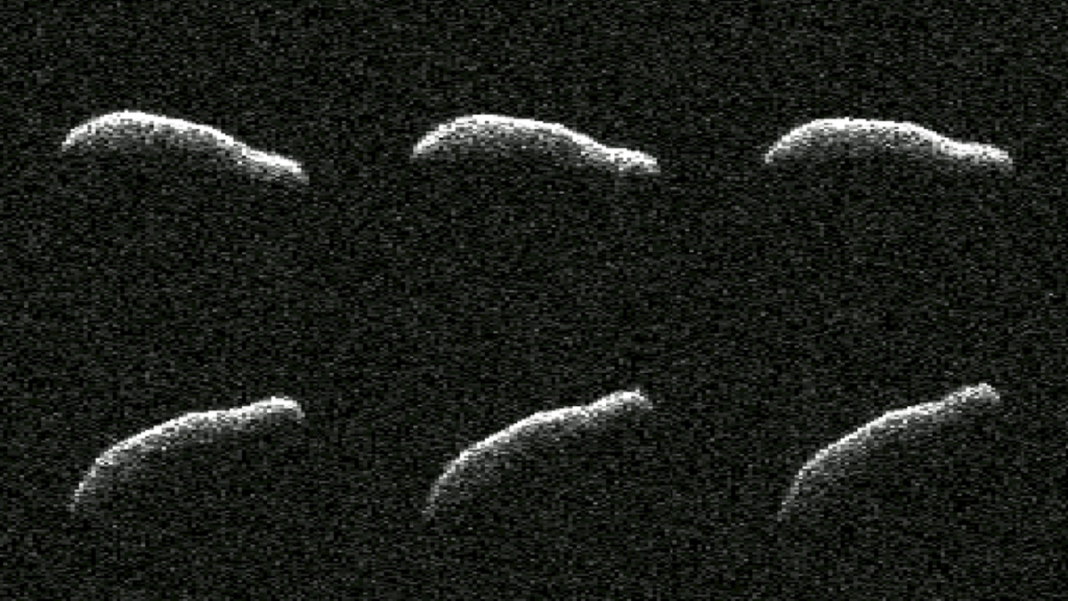UNITED STATES: NASA researchers have located an asteroid that is about the same size as the Empire State Building. Astronomers are interested in the asteroid because of its long shape and the speed at which it recently passed Earth.
The Southern California-based Jet Propulsion Laboratory of NASA closely monitored the peculiarly formed asteroid 2011 AG5.
Similar in size to the Empire State Building, the asteroid is 1600 feet long and roughly 500 feet wide.
According to a NASA news release, the highly elongated asteroid’s dimensions were discovered using the powerful 230-foot (70-meter) Goldstone Solar System Radar antenna dish at the Deep Space Network’s facility in Barstow, California.
According to Lance Benner, a principal scientist at JPL who assisted in leading the observations, this is one of the most elongated near-Earth objects among the 1,040 that have been detected by planetary radar to date.
On February 3, the asteroid 2011 AG5 whizzed 1.1 million miles past Earth. Since the object was discovered 12 years ago, astronomers have carefully analysed its size, rotations, surface, and profile.
A montage of six photos from the Goldstone Solar System radar antenna dish in California can be seen in the picture.
The astronomers noted a few things: When seen by the human eye, it appears to be scooped on one side and rotates every nine hours. It is as dark as charcoal.
The asteroid’s orbit around the sun can be determined in large part by the Goldstone radar measurements.
Radar offers accurate distance readings that NASA’s Center for Near Earth Object Studies (CNEOS) researchers can use to fine-tune the asteroid’s orbital path.
Asteroid 2011 AG5 circles the Sun once every 621 days and won’t come particularly close to Earth until 2040, when it will pass by without incident at a distance of roughly 670,000 miles (1.1 million kilometres, or nearly three times the Earth-Moon distance).
Paul Chodas, the director for CNEOS at JPL, observed that 2011 AG5 had an interesting fate: “Interestingly, shortly after its discovery, 2011 AG5 became a poster-child asteroid when our research revealed it had a tiny likelihood of a future impact.”
According to the planetary radar team, “continuous observations of this object removed any likelihood of contact, and these new ranging data will further refine exactly where it will be far in the future.”
Also Read: NASA James Webb Space Telescope Unveils Fresh Details in Pandora’s Cluster



